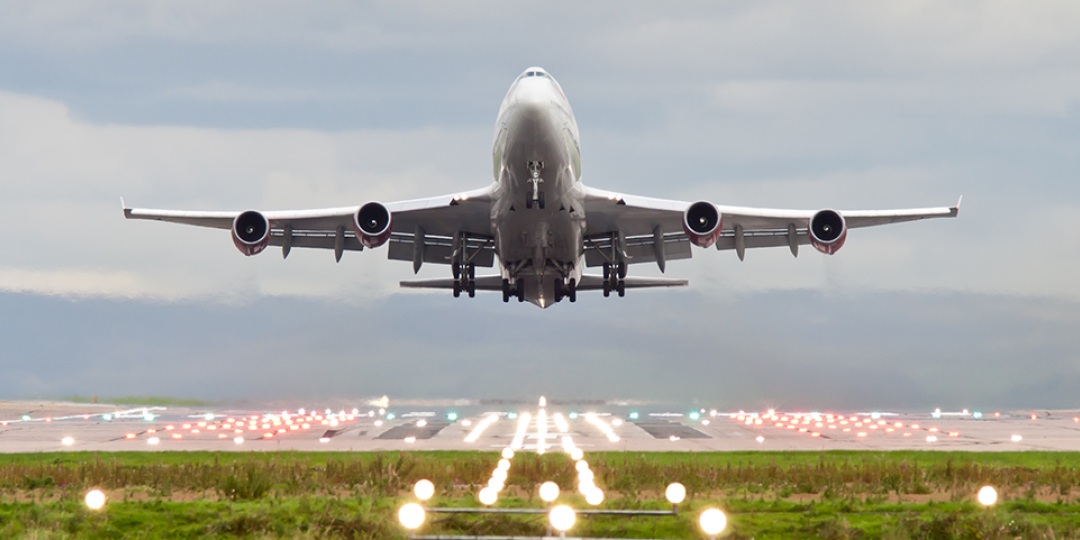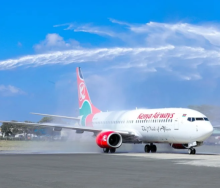Direct flights to, from and within Africa are severely lacking, with several key routes still unserved.
Airbus Market Intelligence and Consulting Director Geert Lemaire, speaking at the AviaDev Conference in Windhoek, Namibia, told delegates there were several reasons for this.
Referring to Airbus’s report on commercial aviation in Africa, ‘Exploring the horizons: A study of unserved air routes to, from and within Africa’, Lemaire said factors such as restrictive bilateral air service agreements, economic variables, plus challenges in capacity, frequency and operating cost-efficiency contributed to these routes remaining unserved.
Of the 15 ‘Top Tier’ unserved direct routes to and from, or within Africa, 11 previously had had direct flights, of which four routes were still being operated up until 2022. Of the 15, ten were intercontinental routes in and out of Africa, (three of these were to and from South Africa – Johannesburg-Mumbai, Cape Town-Brussels, Durban-London). Five were international routes within Africa, (Cape Town-Lagos) and 10 were intercontinental routes.
The report points out the following unserved destination which could make a considerable difference to the aviation requirements of the South African economy.
Johannesburg-Mumbai
The last direct flights from South Africa to India were operated by SAA and discontinued in 2015, Acsa’s Acting Group Manager for Traffic Development, Mpho Rambau told Travel News in May 2024.
“Currently, there is no non-stop service available between the entire subregion of Southern Africa and India. Moreover, the route between the two cities sees substantial origin and destination (O&D) traffic levels that surpass those of many existing non-stop services to and from Africa,” says the report.
From the primary transit hubs in Addis Ababa, Nairobi and Dubai, Ethiopian Airlines, Kenya Airways, Emirates Airline, Qatar Airways and Etihad Airways capture the majority of O&D traffic on the route to Mumbai.
“The routings constitute a significant detour, ranging from an additional 10% distance for Kenya Airways connecting traffic via Nairobi, to approximately 25% for Qatar Airways’ connections through Doha,” notes the report.
The report reveals that only 4% of the Johannesburg-Mumbai traffic opts to fly British Airways or Virgin Atlantic via London, and that this itinerary distance exceeds that of a direct flight by 2,3 times.
According to the report and its projected traffic for 2026, the route would be able to sustain six weekly flights in a 250-seat widebody, or five weekly frequencies operated by a 280- to 300-seat widebody.
Cape Town-Brussels
Between 2019 and 2023, O&D traffic between Cape Town and Brussels accounted for 48% South Africa’s traffic to Brussels, followed by Johannesburg-Brussels with 45%.
“Traffic between Brussels and Cape Town has swiftly recovered from the pandemic, with levels observed in the period from December 2022 to November 2023 surpassing those of the corresponding period in 2018 and 2019 by more than 30%,” says the report.
According to Airbus, the demand for this route comes as a result of the presence of about 200 Belgian companies in the country, and an estimated 10 000 Belgian immigrants in South Africa since 2020.
The current primary transit hub for the route is via Johannesburg, with Air Belgium serving most of the traffic (these flights were terminated in November 2023). The Cape Town-Johannesburg connection is served by Airlink.
Airbus’s predictions for 2026 traffic substantiates the use of four weekly 250-seat widebody flights or three weekly 280- to 330-seat widebody flights.
Durban-London
The Durban-London route was served three times weekly by British Airways between the end of 2018 and was discontinued in early 2020, due to the pandemic.
The former direct route stimulated traffic, encouraging average passenger traffic of 8 200 O&D per month, indicating a 30% increase from the average 6 200 passengers in the previous year.
Primary transit hubs for this route are Dubai, Johannesburg and Doha.
“These travellers opted to connect through Middle Eastern hubs, resulting in considerable detours compared with the shorter itineraries via Johannesburg or Cape Town,” noted the report.
During the reference period, Emirates operated flights to Durban from its Dubai hub, while Qatar Airways included Durban as a tag end flight on its Doha-Johannesburg service. Travellers flying with British Airways or Virgin Atlantic had to use other carriers for the flights between Durban and Johannesburg or Cape Town.
Airbus mentions Cape Town to Lagos flights as a strategic connection for economic and tourism development, not only bilaterally, but continentally and internationally. These African cities act as gateways for international connections and a connection may facilitate increased engagement, co-operation and exchange with the intercontinental market.
Historical data actually showed a decline in traffic between South Africa and Nigeria from 2017. Traffic shrunk at a rate of about 7,3% per year from 2015 to 2019,” says the report. The inference is that there is room for both Cape Town-Lagos and Johannesburg-Lagos flights.
The top five unserved intra-African air routes were Dakar-Libreville, Abidjan-Douala, Abuja-Nairobi, Cape Town-Lagos, and Dakar-Douala.
The top ten unserved intercontinental routes were Harare-London, Johannesburg-Mumbai, Lagos-New York, Lagos-Toronto, Entebbe-London, Lagos-Manchester, Cape Town-Brussels, Durban-London, Nairobi-Washington DC, and Lagos-Houston.















